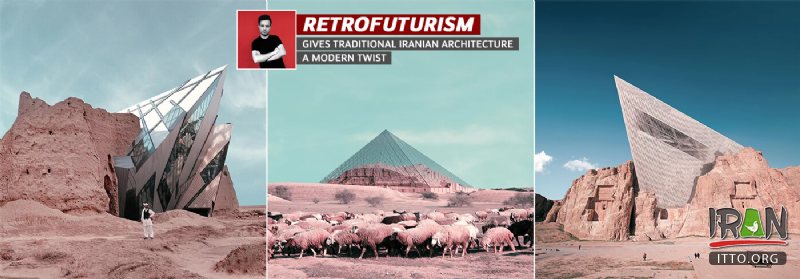Villages and cities in Iran have always had a fixed low-rise horizontal skyline due to the lack of beam and column technology. Although some cities have already adopted contemporary styles and have constructed soaring skyscrapers, but the majority of towns remain committed to traditional building techniques.
Iranian architect Mohammad Hassan Forouzanfar decided to give traditional Iranian architecture a structural upgrade but kept its main features intact. In his conceptual creations titled "Retrofuturism", the architect used traditionally-designed houses as a starting point, but introduced them to the modern world of skyscrapers and surreal forms, mixing both styles together.
for "Retrofuturism", forouzanfar has selected places in iran including pre-islamic royal palaces and castles in fars, sistan and baluchistan, khuzestan and kashan provinces. the insertions of contemporary western architecture offer a contradictory mix that links iran’s past to the future and present of the west.



